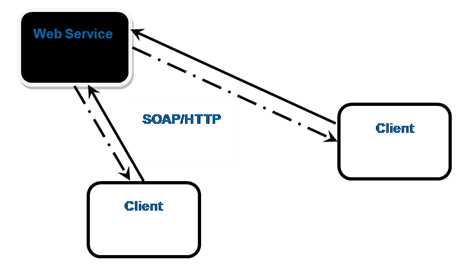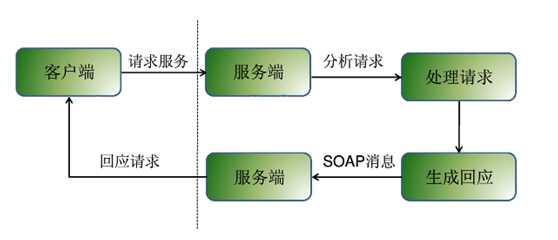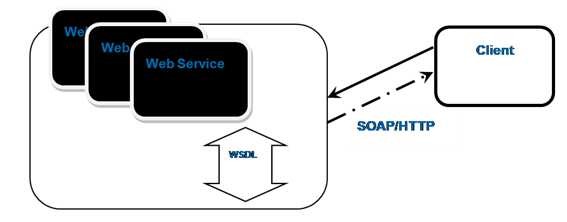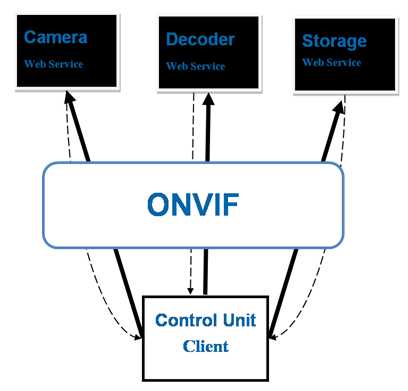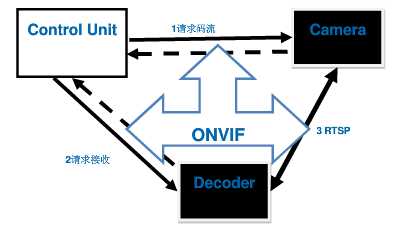基于ONVIF协议的摄像头开发总结
Posted
tags:
篇首语:本文由小常识网(cha138.com)小编为大家整理,主要介绍了基于ONVIF协议的摄像头开发总结相关的知识,希望对你有一定的参考价值。
ONVIF规范中设备管理和控制部分所定义的接口均以Web Services的形式提供,设备作为服务提供者为服务端。ONVIF规范涵盖了完全的基于XML及WSDL的定义。每一个支持ONVIF规范的终端设备均须提供与功能相应的Web Service。服务端与客户端的数据交互采用SOAP协议。ONVIF中的其他部分比如音视频流则通过RTP/RTSP进行 。
<web service>
Web Service是基于网络的、分布式的模块化组件,执行特定的任务。Web Service 主要利用HTTP 和SOAP 协议使数据在Web 上传输。Web 用户能够使用 SOAP 和 HTTP通过Web 调用的方法来调用远程对象。
Web Service是基于XML和HTTPS的一种服务,其通信协议主要基于SOAP。服务端、客户端以传递符合XML的SOAP消息实现服务的请求与回应。
客户端根据 WSDL 描述文档,会生成一个 SOAP 请求消息,该请求会被嵌入在一个HTTP POST请求中,发送到Web Services 所在的Web 服务器。Web Services 请求处理器解析收到的 SOAP 请求,调用相应的 Web Services。然后再生成相应的SOAP 应答。Web 服务器得到 SOAP 应答后,会再通过 HTTP应答的方式把信息送回到客户端。
<ONVIF规范>
ONVIF规范向视频监控引入了Web Service的概念。设备的实际功能均被抽象为了Web Service的服务,视频监控系统的控制单元以客户端的身份出现,通过Web请求的形式完成控制操作。
A:Web Service能为视频监控什么
a) 设备的无关性,任何一个设备接入系统,不会对其他系统造成影响。
b) 设备的独立性,每一个设备只负责对接收到的请求做出反馈,甚至不需要知晓控制端的存在。
c) 管理的集中性,所有的控制由客户端来发起。
B:ONVIF规范能为视频监控带来什么
a) 抽象了功能的接口。统一了对设备的配置以及操作的方式。
b) 控制端关心的不是设备的型号,而是设备所提供的Web Service。
c) 规范了视频系统中Web Service范围之外的行为。
d) ONVIF提供了各个模块的WSDL,拥有效率非常高的开发方式。
C:ONVIF规范的内容
a) 设备发现
b) 设备管理
c) 设备输入输出服务
d) 图像配置
e) 媒体配置
f) 实时流媒体
g) 接收端配置
h) 显示服务
i) 事件处理
j) PTZ控制
k) 其他
<WSDL>
WSDL是Web services 描述语言(Web Service Description Language)的缩写。是一种基于xml的网络服务描述语言,用来描述Web服务和说明如何与Web服务通信的XML语言,为用户提供详细的接口说明书。
<span data-wiz-span="data-wiz-span" style="font-size: 1rem;"><?xml version=‘1.0‘ encoding=‘UTF-8‘?>
<wsdl:definitions name="HelloWorld"
targetNamespace="http://server.cxf.webservice.web.apps.lucl.com/"
xmlns:xsd="http://www.w3.org/2001/XMLSchema"
xmlns:wsdl="http://schemas.xmlsoap.org/wsdl/"
xmlns:tns="http://server.cxf.webservice.web.apps.lucl.com/"
xmlns:soap="http://schemas.xmlsoap.org/wsdl/soap/"
xmlns:ns1="http://schemas.xmlsoap.org/soap/http"
>
<!-- 定义数据类型 -->
<wsdl:types>
<xs:schema xmlns:xs="http://www.w3.org/2001/XMLSchema"
xmlns:tns="http://server.cxf.webservice.web.apps.lucl.com/"
elementFormDefault="unqualified"
targetNamespace="http://server.cxf.webservice.web.apps.lucl.com/"
version="1.0">
<xs:element name="sayHi" type="tns:sayHi" />
<xs:element name="sayHiResponse" type="tns:sayHiResponse" />
<xs:complexType name="sayHi">
<xs:sequence>
<xs:element minOccurs="0" name="arg0" type="xs:string" />
</xs:sequence>
</xs:complexType>
<xs:complexType name="sayHiResponse">
<xs:sequence>
<xs:element minOccurs="0" name="return" type="xs:string" />
</xs:sequence>
</xs:complexType>
</xs:schema>
</wsdl:types>
<!-- 定义消息分组 -->
<wsdl:message name="sayHiResponse">
<wsdl:part element="tns:sayHiResponse" name="parameters" />
</wsdl:message>
<wsdl:message name="sayHi">
<wsdl:part element="tns:sayHi" name="parameters" />
</wsdl:message>
<!-- 定义port type -->
<wsdl:portType name="HelloWorldPortType">
<wsdl:operation name="sayHi">
<wsdl:input message="tns:sayHi" name="sayHi" />
<wsdl:output message="tns:sayHiResponse" name="sayHiResponse" />
<!-- 指定当 Web 服务设法响应客户机的请求时所发生的任何消息级异常 -->
<!--
<wsdl:fault name="" message=""></wsdl:fault>
-->
</wsdl:operation>
</wsdl:portType>
<!-- binding操作到特定协议,即关联portType到协议,这里为SOAP -->
<!-- W3C 推荐了三个 Web 服务的绑定:
HTTP 上的 SOAP(SOAP over HTTP)
HTTP GET/POST
SOAP/MIME
-->
<wsdl:binding name="HelloWorldSoapBinding" type="tns:HelloWorldPortType">
<soap:binding style="document" transport="http://schemas.xmlsoap.org/soap/http" />
<wsdl:operation name="sayHi">
<soap:operation soapAction="" style="document" />
<wsdl:input name="sayHi">
<soap:body use="literal" />
</wsdl:input>
<wsdl:output name="sayHiResponse">
<soap:body use="literal" />
</wsdl:output>
<!-- 应用portType处的fault -->
<!--
<wsdl:fault name="">
<soap:fault name="" use="literal"/>
</wsdl:fault>
-->
</wsdl:operation>
</wsdl:binding>
<!--
描述binding的连接信息,根据绑定所实现的 portType 来处理请求。
对于 HTTP 上的 SOAP,这就是指向那个进程的 URL。
-->
<wsdl:service name="HelloWorld">
<wsdl:port binding="tns:HelloWorldSoapBinding" name="HelloWorldPort">
<soap:address location="http://localhost:9000/helloWorld" />
</wsdl:port>
</wsdl:service>
</wsdl:definitions></span>
<SOAP>
SOAP是Simple Object Access Protocol的缩写。是基于XML的一种协议。一条SOAP 消息就是一个普通的 XML 文档,包含下列元素:
必需的 Envelope 元素,可把此 XML 文档标识为一条 SOAP 消息
可选的 Header 元素,包含头部信息
必需的 Body 元素,包含所有的调用和响应信息
可选的 Fault 元素,提供有关在处理此消息所发生错误的信息
在向Web Service发送的SOAP请求中,Body元素中的字段需与WSDL中数据类型的相符合。在构建SOAP的过程中,必须从WSDL文件中获取并映射这一种对应关系。然而这样一个对应过程将是充满了重复性和机械性的,为了避免不必要的人工差错以及节约开发时间,一个名为gSOAP的编译工具应运而生。
gSOAP利用编译器技术提供了一组透明化的SOAP API,并将与开发无关的SOAP实现细节相关的内容对用户隐藏起来。通过将WSDL文件解析序列化为C/C++文件,最小化了Web Service的开发过程。
SOAP协议位置
<wiz_tmp_tag id="wiz-table-range-border" contenteditable="false" style="display: none;">
以上是关于基于ONVIF协议的摄像头开发总结的主要内容,如果未能解决你的问题,请参考以下文章
